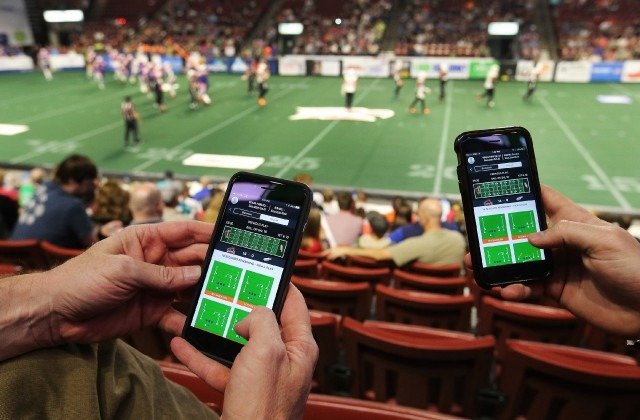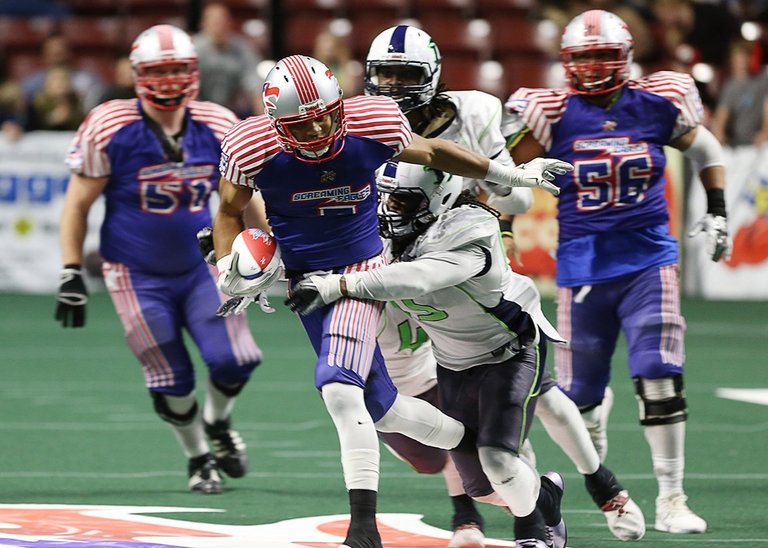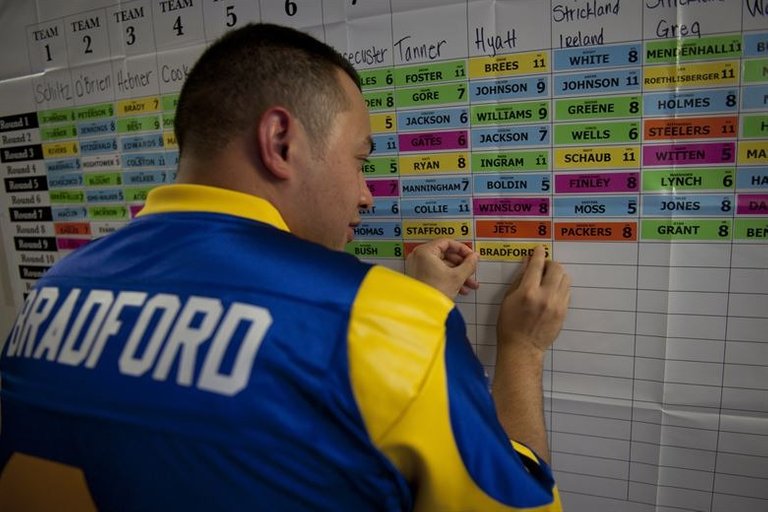
Photo courtesy: Medium
Fantasy football is a big business, even if it started out as a fun, vicarious exercise. It is this writer’s opinion that the Fan Controlled Football League is an extension of this phenomenon that brings together millions of sports fans and rakes in billions in annual revenue.
To understand where we’re at today, it’s important to provide some context, especially in regards to the FCFL’s predecessor, fantasy sports leagues. In 2003, 15.2 million individuals across the US and Canada participated in fantasy sports leagues. By 2008, this number reached 29.9 million. Seven years later this total nearly doubled to 56.8 fantasy sports players. That is nearly 20 million more than the most populous American state, California, which had just over 37 million residents in 2015.
Not only is fantasy football popular in the US, it is extremely lucrative. It is estimated that in 2015 revenues reached $18.6 billion, or six billion more than the National Football League itself! By 2017, the number of players reached 59.3 million, while revenues totaled approximately $7 billion.
Fantasy football is big business in the US. Photo labeled for reuse.
The potential of fantasy sports is massive given the large populations of other countries like Brazil and India with sports crazed fans in lucrative sports like soccer and cricket.
It comes as no surprise then that FCFL would latch on to this industry and try to get a piece of the pie. However, the project’s developers went beyond dollar signs and really got to the core of why sports fans participate in activities like fantasy sports leagues.
The first and most obvious appeal of fantasy sports leagues is the thrill of managing teams. Ever since sports games and matches have been televised, men have been abusing television sets with insults and curses aimed at managers who would have been better off listening to their advice. Managing a fantasy sports league team puts individuals in the driver’s seat.
When one thinks about it, why does one follow a team? Why do they spend their time and hard earned money to support millionaire players, coaches and owners? Is it loyalty to their city? Tradition? Wives around the world have been asking this question for decades. Simply put, what do people get out of it?
Regardless, what the answer is fantasy sports leagues provide much needed consumer interaction, a trend seen across industries. Consumers simply don’t want to be passive anymore, and that is also true when it comes to sports. Fantasy sports players interact with other players. They exchange suggestions. They trade players. They tease those with losing teams, and secretly despise those doing well.
FCFL takes this concept of fan participation to a whole other level. Participants do some of the things fantasy sports players do, but with real life consequences. In fact, participants draft team players, hire and fire coaches and can even call plays in real time.

Fan decisions resulted in the Salt Lake City Screaming Eagles having the league's third best offense. Photo courtesy: Slate.
Currently, FCFL owns one team, the Salt Lake City Screaming Eagles, an indoor football team. FCFL began development of their platform in 2015. The Salt Lake City Screaming Eagles made their debut in February 2017. Despite playing in a ten-team indoor football league known by few, the team has been able to garner attention that would make teams in bigger leagues jealous. Views across Facebook, YouTube and Twitch exceeded 1 million. Media outlets like Wall Street Journal and the New York Times covered the team, while tens of thousands of fans from around the world tuned in.
In addition to media attention, the FCFL was able to meet its goal of getting individuals to participate. In total, over 300 thousand plays were called by fans in real time! Furthermore, over $2 million was invested into the FAN platform and token, FCFL’s blockchain backed cryptocurrency.
How does it work? Apparently, relatively easy.
In order to participate in the team’s decision-making, individuals need to buy FAN tokens. The more FAN tokens one owns the greater weight their decision will have. Tokens can also be obtained by “watching games, calling plays, proving their knowledge, making team decisions and competing against rival fans.” Basically, the more invested the individual is the more they will get in return. The platform’s website claims “certain top fans of the team that wins the title get a cut of the $1,000,000 and growing championship prize pool and bragging rights over the rest of the league.” The FCFL makes the whole process a buy-in for fans.
The FCFL also plans to test out new technologies, which may eventually find their way into traditional leagues. Technologies include live stream camera helmets, real time player biometrics, chips in the ball and overhead drones with cameras. On their website, the FCFL states “all of our games will be played in a cutting edge production facility where a truly interactive sports entertainment experience can be delivered in real-time in any connected device on the planet.”
As interesting as the FCFL is, the concept is unlikely to catch traction in current leagues. These leagues already have buy-in based mostly on tradition. However, being relegated to small leagues and sports could be good for the FCFL and any future iterations. The concept is more complimentary to the NFL than a competitor, and can be a fun way to satisfy cravings for football in the winter, spring and summer when the NFL and college football are on hiatus. The same can be replicated across the world and sports, which is a stated goal of the developers behind FCFL.
There are several things going well for the FCFL. This includes partnerships with industry relevant and respected players like Sports Illustrated and Amazon’s Twitch. Another fact that protects the platform from being attacked as a gimmick is the fact that it uses the well-respected Ethereum blockchain. Another advantage is that like fantasy sports leagues, the FCFL’s business model allows fans to financially participate and potentially profit from sport outcomes without running the risk of being classified as gambling. Finally, any concerns regarding play calling chaos of thousands of opinions were eased when the Screaming Eagles finished the season with the third ranked offense.
Other factors that are in FCFL’s favor is that its association with blockchain and cryptocurrency appeals to a demographic also more likely to participate in fantasy sports league. The Fantasy Sports Trade Association found that the average age of fantasy sports players is 32. 71% are also male, another demographic more likely to be invested in cryptocurrencies as well as 50% having a college degree or more. Finally, the average fantasy sports player spends $653 a year on their activities meaning that having disposable income to take part in the experiment is not a major concern.
Despite all the factors in its favor, there are some obstacles for the FCFL to overcome. The first is the fact that FAN tokens are just one of over a thousand cryptocurrencies currently on the market. Without easy liquidity on exchanges, FAN tokens have limited value and appeal. In fact, the platform may be better off using a more tried and true cryptocurrency or an up-and-coming cryptocurrency with a lot of upside like Cardano, created by Ethereum co-founder, Charles Hoskinson. Knowing that one can purchase products or services or easily exchange their tokens to fiat currencies would ease concerns and add value to participants.
Another potential problem for FCFL is a dominance by super fans to the detriment of other interested parties. If it comes to a point in which super fans hold too much share of a team and decisions shift heavily in their favor, others may view investing in teams whether through their time, effort or money in the same way as looking through albums of someone else’s children. One of the FCFL’s biggest strengths is interaction and buy-in from participants and an oligarchy of any type may diminish interest.
Regardless of whether or not the platform is able to garner sustained interest in the idea as well as expand into other sports, the concept is sure to be a fun ride, if not a guilty pleasure, for thousands around the world.
